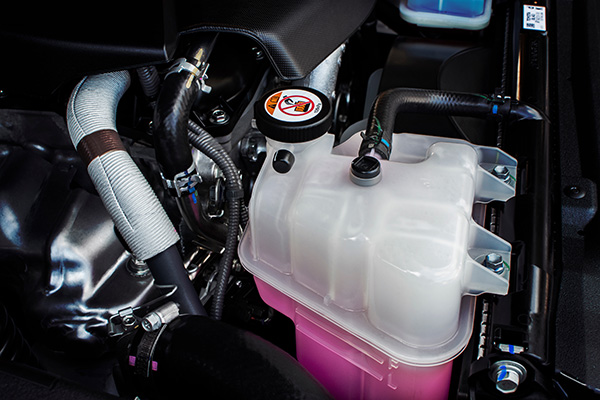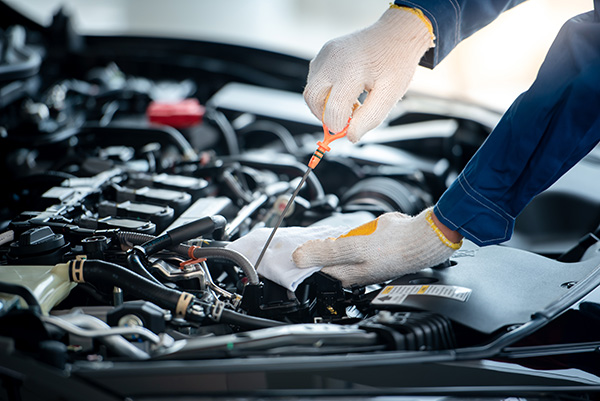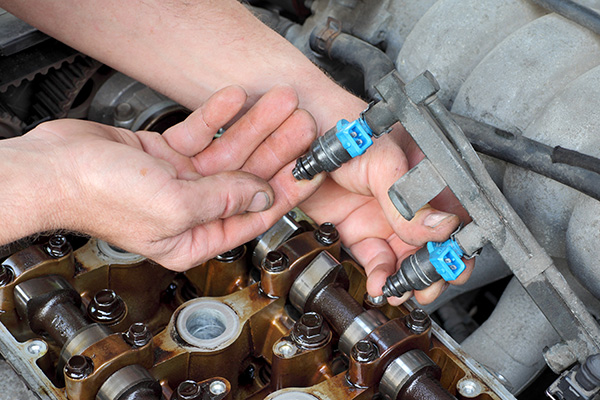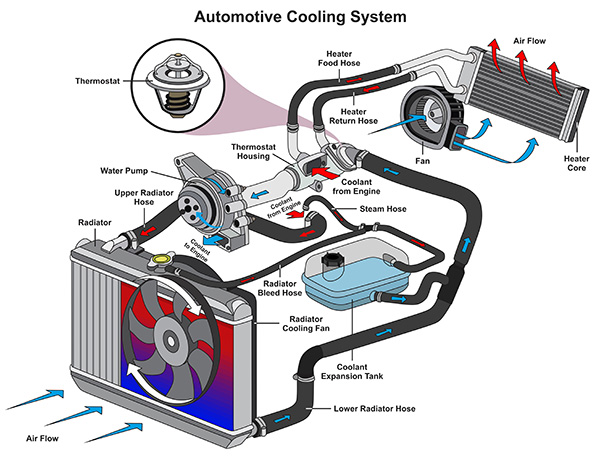Posted on 8/30/2024

When the summer heat rolls in, and your car's engine starts to feel the strain, you might wonder: Is it okay to use water instead of antifreeze? After all, water is more accessible, and it seems like a quick fix. However, this seemingly simple swap can significantly affect your vehicle's cooling system and overall performance. We will explain whether using water instead of antifreeze during hot weather is safe. The Role of Antifreeze Antifreeze, or coolant, plays a crucial role in regulating your engine's temperature. It is designed to prevent the engine from overheating in the summer and freezing in the winter. But how does it do this? Antifreeze contains chemicals like ethylene glycol or propylene glycol, which have a higher boiling point and lower freezing point than water. This means that antifreeze can handle the extreme temperatures that your engine might face, ensuring that the engine runs smoothly and efficiently. Moreover, antifreeze contains co ... read more
Posted on 7/26/2024

Owning a car is a significant responsibility. While it's easy to enjoy the freedom and convenience it offers, it's equally important to keep up with regular maintenance to ensure your vehicle's longevity and safety. Proper maintenance saves you money in the long run and helps prevent unexpected breakdowns. Curious about what tasks are most crucial for your car's health? We have listed the seven essential car maintenance tasks every vehicle owner should know. 1. Regular Oil ChangesRegular oil changes are one of the most fundamental and critical maintenance tasks for your car. Engine oil lubricates all the moving parts within the engine, reducing friction and preventing overheating. Over time, oil breaks down and becomes less effective, which can lead to engine damage. Most experts recommend changing your oil every 3,000 to 5,000 miles, but always refer to your vehicle ... read more
Posted on 6/28/2024

When it comes to maintaining your vehicle, finding a trusted auto service provider is paramount. But what if you could drive away with exceptional service and the assurance of a rock-solid warranty? At Guthrie's Auto Service, we offer the Extended NAPA Peace of Mind® Warranty, designed to provide you with unparalleled peace of mind on the road. We will list the numerous benefits this warranty brings you. Nationwide Coverage for Unmatched Peace of Mind One of the standout features of the NAPA Peace of Mind® Warranty is its nationwide coverage. Honored at more than 14,000 locations across the United States, this warranty ensures that no matter where your travels take you, a NAPA AutoCare Center is always nearby to assist with any covered repairs. This extensive network is unmatched by any other automotive repair brand, offering you a level of security that's hard to beat. Comprehensive Coverage of Parts and Labor The ... read more
Posted on 5/27/2024

In the world of automotive engineering, fuel injectors play a pivotal role in ensuring optimal engine performance. But how exactly do they work and require regular maintenance to keep your vehicle running smoothly? Let's explore the fascinating world of fuel injectors and discover the answers to your questions. How Do Fuel Injectors Work Fuel injectors are sophisticated devices responsible for delivering precisely measured amounts of fuel into an engine's combustion chambers. Unlike carburetors, which mix air and fuel before entering the engine, fuel injectors atomize the fuel into a fine mist, allowing for more efficient combustion. This process is controlled by the engine's electronic control unit (ECU), which monitors various engine parameters to determine the optimal fuel delivery strategy. The Importance of Fuel Injector Maintenance While f ... read more
Posted on 4/26/2024

As temperatures rise and summer approaches, ensuring your vehicle's cooling system is in top condition becomes vital. From preventing overheating to maintaining engine efficiency, a cooling system flush is an essential maintenance task often overlooked by car owners. What Does the Cooling System Do The cooling system in your vehicle is responsible for regulating the engine's temperature, preventing it from overheating during operation. It comprises various components, including the radiator, water pump, thermostat, hoses, and coolant. Together, these parts work seamlessly to dissipate engine-generated heat and maintain optimal operating temperatures. Signs Your Cooling System Needs Attention Detecting when your cooling system requires maintenance is paramount for preventing potential issues. Several signs indicate that it may need attention, including frequent overheating, coolant ... read more